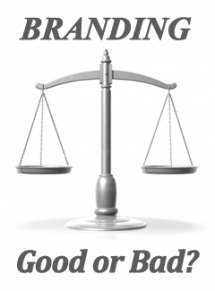So what is Starbucks?
Is it coffee beans?
Is it a made to order latte?
Is it a hang-out?
Is it music?
Check this out from AdAge.com:
How Starbucks Is Changing Its Tune
Lombard Departure Signals Coffee Chain Will Be More Digitally Focused and Will Become More Distributor Than Music Producer
LOS ANGELES (AdAge.com) -- Goodbye, Starbucks the music producer and talent spotter. Hello, Starbucks the would-be tastemaker, digital-media operator and iTunes marketing partner.
The coffee chain restructured its entertainment division late last week, most notably by announcing the departure of Ken Lombard, the division's president, and his replacement with Chris Bruzzo, its chief technology officer.
Facing weaker-than-forecasted earnings, slowing sales and an economic climate that CEO Howard Schultz told investors is "the weakest in our company's history," Starbucks has de-emphasized noncore businesses such as egg muffins and entertainment and tried to put the focus back on beans. But given that it sold 4.4 million CDs last year, it always seemed unlikely Starbucks would abandon the music market entirely.
It hasn't. What it has done is walk away from the strategy Mr. Lombard helped frame and execute. It will no longer aim to discover new artists or produce records. Its Hear Music record label, which was formed in March 2007 as part of a larger effort to forge relationships directly with artists and distribute their recordings at Starbucks locations, will now be run entirely by the Concord Music Group, which had been a partner in the division.
Did what he had to
Mr. Bruzzo could not be reached for comment, and the company is in a quiet period in the run-up to its earnings announcement. Mr. Lombard himself, reached on his cellphone late Friday, would say only that he had "a tremendous amount of relationships at Starbucks and a great love for the company" but cited a nondisclosure agreement that precluded his talking about his vision for entertainment at the company or his next move.
One executive familiar with Starbucks' reorganization said Mr. Lombard had done "what he was asked to do; it's not that he was doing anything wrong. It's a refocusing of the business. It's going to be a different business than he was doing before."
The new entertainment business, it seems, is going to be focused less on jewel cases than on digital wares. On Friday, the company disclosed that AT&T Wi-Fi service would be available at more than 7,000 U.S. company-operated stores by May 1. That announcement, coupled with Mr. Bruzzo's expanded role, augurs a Starbucks that will increasingly be a place to download all kinds of music, rather than just mellow -- and increasingly, mainstream -- acts such as Hear Music artists Paul McCartney, Joni Mitchell and James Taylor.
Last October, all 10,000 Starbucks coffee shops began a monthlong promotion offering customers free iTunes cards to download specific songs from Apple's iTunes music service. Its purpose was two-fold: First, re-establish Starbucks as the Oprah-like tastemaking force it was when it helped esoteric jazz and rock acts gain prominence several years ago. Second, get customers used to using Starbucks' Wi-Fi network to buy music on iTunes.
Before joining Starbucks, Mr. Bruzzo was employed by Amazon, and part of his mandate, Amazon executives said, was to help turn it into a digital-entertainment company -- something it was much closer to becoming than Starbucks was.
Physical retailer selling digital?
One of those executives remarked that it almost makes more sense to sell CDs along with lattes than it does to hawk MP3s. One person who'd worked with Mr. Bruzzo at Amazon asked: "How does Starbucks become a 'digital' entertainment company when its product is really physical? What do people go to Starbucks.com for?"

Under Mr. Lombard's tenure, Starbucks enjoyed nearly unprecedented success selling its first collaboration with an artist, Ray Charles. His "Genius Loves Company" sold 5.5 million copies worldwide (the first multi-platinum album of his career), and 25% of them were sold at Starbucks. However, none of the offerings that followed matched that home run. And not all of Concord's acts have chosen to align with Hear Music, preferring instead to simply market their wares through the coffee chain rather than collaborate with Starbucks on albums. For example, Brazilian composer, arranger and pianist Sergio Mendes* will release his new album this June not via Hear Records but simply as a Concord Music Group artist whose work is available at Starbucks, among other retailers on and offline.
"They're certainly important on a retail-sales front," said Brad Gelfond, VP-brand partnerships and asset development at Warner Bros. Records, "and especially so if the artist is in that 'Starbucks zeitgeist' -- 30- something, tasteful, maybe female."
Mr. Gelfond added that when Warner recording artist Alanis Morrissette releases her new album in June, it will be available for sale at Starbucks, though, unlike the acoustic version of her multimillion- selling album "Jagged Little Pill," not exclusively at Starbucks.
How important will Starbucks be to its success?
"I don't know," he joked. "I drink tea." Sphere: Related Content


























 Consumers are notoriously impatient. They want everything and they want it now. But what if they are forced to—gasp!—wait in line? Or—shudder!—wait for delivery? Does delaying consumption negatively impact a person's enjoyment of the product?
Consumers are notoriously impatient. They want everything and they want it now. But what if they are forced to—gasp!—wait in line? Or—shudder!—wait for delivery? Does delaying consumption negatively impact a person's enjoyment of the product? 
 The long slide in newspaper circulations continued with the release Monday of figures from the Audit Bureau of Circulations showing an overall circulation decline of 3.6% in the six months ending March 2008, compared to the same period one year ago.
The long slide in newspaper circulations continued with the release Monday of figures from the Audit Bureau of Circulations showing an overall circulation decline of 3.6% in the six months ending March 2008, compared to the same period one year ago. 
 For as long as I’ve been in the field of marketing, there has been an ongoing debate as to whether branding is useful for small businesses.
For as long as I’ve been in the field of marketing, there has been an ongoing debate as to whether branding is useful for small businesses. 











